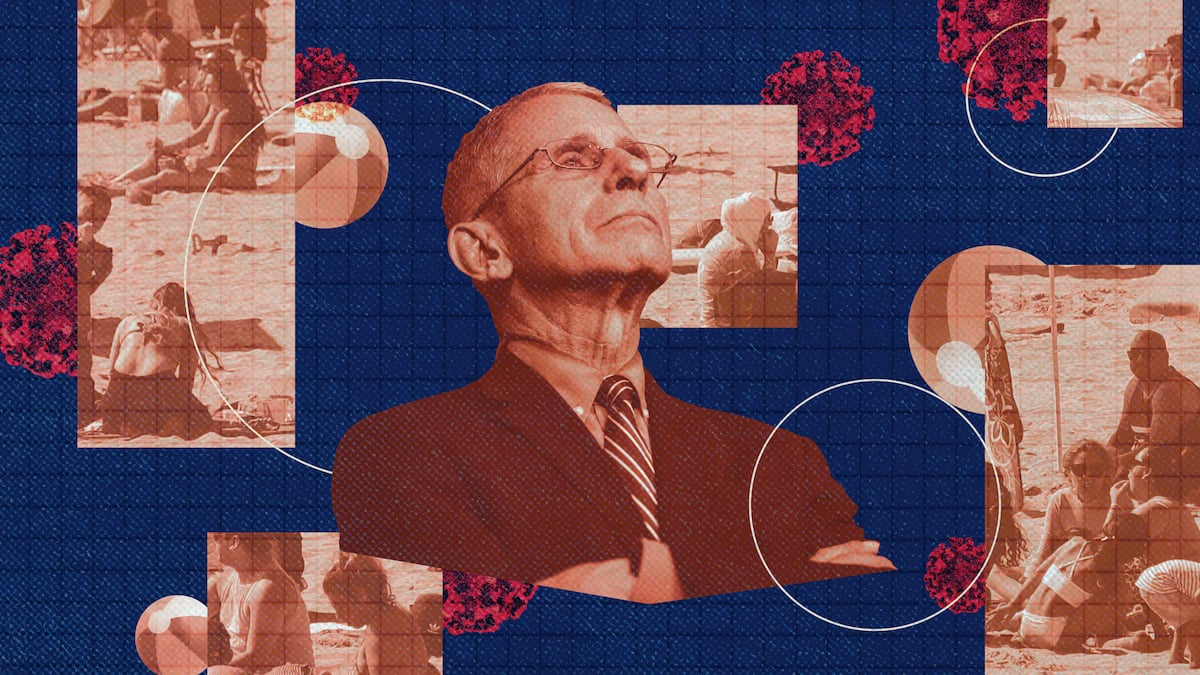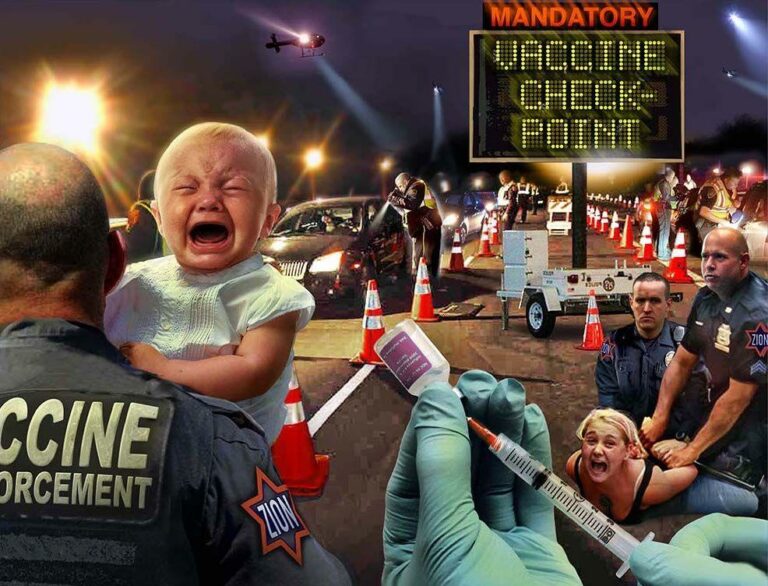The Worst Covid Decision-Making Failures & the Dire Consequences
Two prominent British authorities on evidence-based medicine recently highlighted the ten worst UK Covid policy decision-making failures. Their sobering critique applies equally to the bungling of US senior public health officials at the National Institutes of Health and the Centers for Disease Control and Prevention (CDC), whose repeated blunders – such as conflating viral and antibody tests — and issuing disinformation that overstate Covid infection rates and deaths attributable to Covid. As a result, a vast number of Americans distrust public health pronouncements.
Blame for politically-motivated faulty decisions can also be laid at the doorstep of the World Health Organization. Carl Heneghan, MD, professor of evidence-based medicine at the University of Oxford and director of the Centre for Evidence-Based Medicine and Editor in Chief of BMJ Evidence Based Medicine, and Tom Jefferson, MD a British epidemiologist who is senior associate tutor and honorary research fellow at the Centre for Evidence-Based Medicine, University of Oxford and an author and editor of Cochrane Collaboration reviewer, and a founding member of the Brighton Collaboration.
We repost their article adding highlights and examples of US identified with by an *.
The Ten Worst Covid Decision-Making Failures by Prof Carl Heneghan & Tom Jefferson, Spectator (UK), 1 November 2020
Dealing with a pandemic requires a clear aim, planning, intelligence and supreme flexibility to react to the unknown. However, ever since reports broke in the West of a newly-identified virus in Wuhan in January, this has not been the case in Britain. The result?

We have suffered a very high death toll, and substantial social and economic damage has been inflicted on our society. It did not need to be this way. Our Covid-19 outcome could have been very different if certain mistakes were not made. Here we list some of the major decision-making blunders made over the last eight months.
- Lack of a clear aim
In March, Health Secretary Matt Hancock set out ‘to protect the NHS by building it up and flattening the curve. And to protect life by safeguarding those who are most vulnerable.’ As it became increasingly clear that the NHS wasn’t overwhelmed, however, the aim became muddied.
A grown-up debate between suppression and control of the spread of Covid-19 has not been played out. Hancock considers suppressing Covid is the only way until the cavalry (a vaccine) arrives.
Leaving aside the issue of whether we can suppress a respiratory virus (let’s not forget that we have not achieved that with influenza, despite decades of trying), the suppression ‘plan’ completely ignores the harms of lockdown on the mental, physical, economic and social wellbeing of the country. The original objective of preventing the overwhelming of hospitals was lost as we exited lockdown; a clear and well-articulated alternative has still not replaced it.
* William Briggs, Jay W. Richards, and Doug Axe, are the authors of “The Price of Panic: How the Tyranny of Experts Turned a Pandemic into a Catastrophe” (October 2020)
Professors Richards, Briggs and Axe authored Data Suggest Mandatory Lockdowns Exacted A Great Cost, With A Questionable Effect On Transmission, in the National Review (October 4, 2020) and Lockdown Reversal Shows That When Science Conflicts With Politics, WHO Chooses Politics , in The Federalist (October 12, 2020).
“The evidence suggests that the sweeping, mandated lockdowns that followed voluntary responses exacted a great cost, with little effect on transmission. There is no decisive measurable drop in the number of deaths on the dates when lockdowns should have changed the course of the curves. Instead, the curves gradually bend downward for reasons that predate the lockdowns, with no clear changes ten days later. If this virus is like others, its decline is likely attributable to some mix of changing seasons and the gradual onset of herd immunity. Another factor, of course, could be the widespread use of masks as the year progressed.” [National Review]
They note that in late March 2020, when it was expedient, the World Health Organization (WHO) abandoned its own earlier assessment of the science and promoted global lockdowns. In October, Dr David Nabarro, the Special Envoy to the WHO on Covid-19, stated: “We really do appeal to all world leaders: stop using lockdown as your primary control method.”
Now that the damage the unprecedented lockdown has “accomplished” it is obvious that the high cost of the lockdowns far outweighs any benefit. What’s more, evidence from Sweden that normal life can exist side by side with the virus, has led to growing public opposition to lockdowns. The leadership of the WHO now hope “to socially distance [themselves] from these measures.”
The key lesson we should learn from all this is that when politics conflicts with science, and even their own scientific judgments, WHO opts for politics.” [The Federalist]*
- Wasted efforts
Not having a clear objective has meant Britain has spread its efforts too thinly in tackling Covid-19. This can be seen in the chaotic efforts to increase testing. So far the UK has done over 30 million tests, nearly one test for every two people. But no one knows how many cases occur. Indeed, daily case rates estimates vary wildly from 20,000 to 100,000, depending on which method you choose.
Despite this vast discrepancy, in trying to answer the question of how many are infected, our leaders overlooked the Royal College of General Practitioners surveillance scheme. This programme, which has been in operation for over 60 years, tracks respiratory illnesses over millions of registered patients, carries out swabbing of a subset and has the added value of being able to determine those with symptoms. Such duplication of effort always results in waste.
- Failure to develop a validated test and use it in a meaningful way
The Government set aside £10billion for the test and trace system for England. But money can only get you so far. A PCR test cannot identify those who are contagious unless used judiciously by those qualified to do so, with information on symptoms and medical history. Worst of all, we know that these tests can pick up dead – entirely harmless – fragments of virus as well as genuine infections.
This means that many of the positive results we think we are getting might not be positives (active infections with a risk of contagiousness) at all. This inability to accurately report the most straightforward measures – the proportion of positive tests that were asymptomatic or the date at which the symptoms began – is a major problem for our intelligence gathering. The test results need to be interpreted with clinical skills doctors are taught at medical school.
We now know that there is a direct, inverse relationship between these variables: the shorter the time from an individual having symptoms to getting tested, the more likely it is that they are infectious. But the test and trace system does not take this into account – and continues to fall over due to lack of prioritising those who are more likely to spread the infection: ‘the infectious.’
* “Positive results are indicative of active infection with 2019-nCoV but do not rule out bacterial infection or co-infection with other viruses. The agent detected may not be the definite cause of disease. Laboratories within the United States and its territories are required to report all positive results to the appropriate public health authorities.
Negative results do not preclude 2019-nCoV infection and should not be used as the sole basis for treatment or other patient management decisions. Negative results must be combined with clinical observations, patient history, and epidemiological information.”
Bottom line: The test is useless. You may test positive, but that doesn’t mean COVID-19 is the cause for your illness; you may test negative, but if you are coughing or otherwise ill, you could be deemed “positive,” and all of these results must be reported to the CDC as positive.”*
4. Closure of activities on the basis of no evidence
The absence of evidence on the effectiveness of community masks, curfews, ‘rules of six,’ circuit breakers, restriction of gatherings, and travel has not prevented their implementation on a massive scale across Britain. Instead of commissioning robust studies to plug the evidence gaps, the policy has continually evolved to try and find effective strategies. With no clear outcome in mind, no one knows whether interventions such as the 10pm curfew make a difference. The only policy initiative that seems to count is the more restrictions, the better.
5. Failure to learn from mistakes – our own and those of other countries
The Italian region of Lombardy was the first area in Europe to be hit by Covid-19. At the time, it was said that the UK was about ‘three weeks behind the curve’. Any reasonable person would have sent observers to see what was going on in northern Italy, note mistakes and soak up frontline experience to then pass it on in emergency briefings. In Bergamo, for instance, clinicians reflected on how to prepare for the next outbreak. Their view was that focussing on hospitals was the wrong way to manage the outbreak.
They reported that an epidemic requires a change of perspective toward a concept of community-centred care. This meant that the majority of cases could be dealt with without people being admitted to hospital and instead be treated at home, and that only in the worst instances would someone be admitted.
However, the gradual erosion of community facilities in Britain has meant admission to increasingly centralised hospitals is the only option. As a result, we cannot separate the infectious from the non-infectious. This was one of the major drivers of the spring crisis. In some regions, one-quarter of hospitalised Covid cases were probably a hospital-acquired infection. Does anyone remember our cottage hospitals and our fever hospitals? They were closed for financial reasons, but they had a good reason for being there.
The Nightingale hospitals were originally intended to treat 10,000 Covid-19 cases, but several barely saw a single patient. They were all put on standby in May. If their purpose was to allow the NHS to carry routine treatments, then they have failed, for several NHS trusts are cancelling operations at the moment. If its purpose was additional capacity, then why are there so many scare stories over the shortage of beds? In making mistakes, we should learn from them and try to fix them. The lessons of separation in hospitals have not been re-learned.
- Reliance on forecasting
From the start, decision-makers and advisors in government have had a fatal fascination with those who try to predict the future. One of the most devastating features has been the concentration on the potential benefits of restrictions but the complete disregard for the known and quantifiable human and economic costs of lockdown.
The obsession with super forecasting led to dangerous distractions. When Nightingale hospitals were built, the government largely ignored the problems in care homes.
In England, 23,000 excess deaths have occurred in care homes. The excess far exceeds the excess in hospitals. While the majority of Covid-19 deaths have occurred in hospitals, the excess deaths are approximately 8,400 or seven per cent higher than what would normally be expected. For people in such homes, and the staff who work in them, this failure to consider the opportunity costs of our choices had devastating consequences.
7. Secrecy and multiple data sources
Making sense of the data is made nearly impossible by the sheer number of sources in use. There’s the ONS, PHE, NHS and various surveys. The devolved nations also have their data services. To make matters worse, different methods are often used for the same data. This would be less of a problem if getting hold of the data wasn’t so complicated.
Requests for detailed real-time data by region have gone unanswered; vital NHS data has not been shared, and critical analysis has, therefore, gone awry.
- Tunnel vision
Despite the WHO’s appeal that lockdowns should only be a last resort, the sole approach to addressing the pandemic is the progressive and chaotic imposition of ever-increasing restrictions. This patchwork of measures is likely to fuel endless debate in years to come – and have big consequences – but today it impedes the evaluation of their effectiveness.
The ultimate irony of lockdown measures seems lost on our leaders: it probably only works well in the very totalitarian societies our leaders criticise so heavily.
- Science has gone Awol
This is the most painful one for us: lost in a tornado of accusations, tribalism, abuse, chat shows and tweets, science has been broken. Researchers are intent on verbal boxing matches and not paying enough attention to the evidence on all aspects of the pandemic, which is accumulating by the bucketload.
Crucially they are not helping in presenting and explaining the uncertainties to the public, nor in separating the wheat from the chaff. Major biomedical journals have added to this by taking sides and censoring contrarian views. Too often, the uncertainty within science has been replaced by certainty within the conclusions drawn by the scientific advice.
Scientists can advise, but should never cross the line of telling patients, the public or policymakers what to do.
- Humility
By this stage, our punch-drunk readers will be asking themselves why no one has so far apologised for the apparent failures and admitted their mistakes. We do not know the answer, but the absence of humility is a sign of weakness, not of strength. Understanding the uncertainties in the evidence, reflecting on our fears and our need for reassurance should weigh heavily on the opinions we express.
Where do we go from here? The decisions now being taken are critical. They should not replicate past errors. Addressing some of these failures might be the start of a very different path that controls the impact of the virus while minimising societal disruption.
********
Will Covid-19 Vaccines Save Lives? Current Trials Aren’t Designed To Tell Us, Peter Doshi, BMJ 2020

Dr. Peter Doshi disabuses the public’s false expectations; namely, that a vaccine approved by the FDA against Covid-19 will keep people from getting very sick or dying. He demonstrates – with the manufacturers’ own data — that the trials underway are not actually designed to prove either.
Table 1: Characteristics of ongoing phase II Covid-19 vaccine trials – reveals that:
- “none of the trials currently under way are designed to detect a reduction in any serious outcome such as hospital admissions, use of intensive care, or deaths. Nor are the vaccines being studied to determine whether they can interrupt transmission of the virus.”
Dr. Doshi reminds us that inadequately tested vaccines have been the harbinger of serious, even lethal adverse events. He cites but a few vaccines that had been brought to market prematurely, during infectious disease outbreaks: in 1955, contaminated polio vaccines caused paralysis; in 1976, flu vaccines caused Guillain-Barré syndrome; in 2009 an influenza vaccine caused narcolepsy.
As acknowledged by Harvard drug policy specialists, Drs. Jerry Avorn and Aaron Kesselheim, in a recent article in the Journal of the American Medical Association:
Regulatory Decision-making on COVID-19 Vaccines During a Public Health Emergency:
“Regulatory review of the numerous coronavirus disease 2019 (COVID-19) vaccine candidates will occur under intense clinical, economic, and political pressure…Finding severe rare adverse events will require the study of tens of thousands of patients, but this requirement will not be met by early adoption of a product that has not completed its full trial evaluation.
This concern is even greater for new molecular approaches that have never been used in any prior vaccine, produced by manufacturers that have never brought a vaccine (or any other product) to market.”
**************
In his essay, Covidicide, (November 3, 2020) Brett Wilcox lays out a somber, unflinching staggering inventory list of deliberate lethal policies.

“Covidicide [ koh-vid-uh-sahyd]: killing, death and destruction caused by or subsequent to COVID related measures, policies, rules, pronouncements, interventions and treatments including but not limited to the following:
- the planned, purposeful, and coordinated killing of nursing home residents by government officials in several countries via compulsory co-mingling of COVID patients with COVID negative residents.
- the killing of nursing home residents as a consequence of loneliness, isolation, depression, and sickness due to the long-term forced separation from healthy family and friends.
- the planned and purposeful killing of elderly and disabled patients via administration of respiratory-inhibiting drugs including morphine.
- the killing of both COVID and non-COVID patients by refusing to provide care to real and present patients purportedly to free up resources for theoretical, future patients.
- the killing of COVID patients who are instructed to stay home until their condition has deteriorated rather than seek out and receive early intervention and treatment.
- the killing of non-COVID patients by withholding standard medical care over extended periods of time including diagnostic tests, treatments, and interventions.
- the killing of inpatient COVID patients via profit-driven but contraindicated intubation and ventilation.
- the killing of patients via unwanted Do Not Resuscitate orders.
- the planned and purposeful injuring and killing of people in the [Hydroxychloroquine] HCQ related UK Recovery and WHO Solidarity trials where late-stage COVID patients were given four times the recommended HCQ dosage normally given to early ambulatory patients with zinc and/or azithromycin.
- the planned and purposeful injuring and killing of people who were prevented from receiving HCQ as a result of the fraudulent Surgisphere study which was published by the Lancet [and later retracted] and promoted as evidence against the safety and efficacy of HCQ.
- the planned, purposeful and coordinated killing of people by so-called experts with their claim that there are no known COVID treatments, the censorship of information regarding COVID treatments, and by limiting and/or removing access to such treatments including but not limited to HCQ.
- the planned, purposeful and coordinated killing of people who would have received effective treatments were it not for the silencing, firing, censoring and punishment of medical providers who successfully treat COVID patients.
- the killing of people caused by doctors who fail to honor their Hippocratic Oath by withholding information from COVID patients regarding known and recognized COVID treatments and/or by refusing to prescribe such treatments.
- the killing of people caused by the failure of so-called experts and medical professionals to inform the public of known and recognized natural and inexpensive strategies to strengthen the human immune system.
- the killing of truth via fabricated and/or inaccurate COVID-related statistics including exaggerated disease projections, the fraudulent reclassification of COVID deaths, and PCR-test chicanery resulting in exaggerated and meaningless case counts.
- the killing of common sense and critical thinking skills as manifested by unquestioning submission to endless inane, dangerous, and/or contradictory pronouncements from so-called experts.
- the destruction of education caused by scientifically and morally indefensible school-related COVID measures including mask use and other barriers…
- the killing of the arts and the personal, interpersonal, and societal benefits derived from the creation, expression, and experiencing of the arts.
- the planned and purposeful destruction of the global economy, economic systems and the forced closure of millions of businesses deemed non-essential resulting in unemployment, loss of income and savings, despair, illness, premature death and suicide.
- the killing of kindness, love, good will and civility.
- the killing of bodily autonomy and individual sovereignty.
Read the rest here







